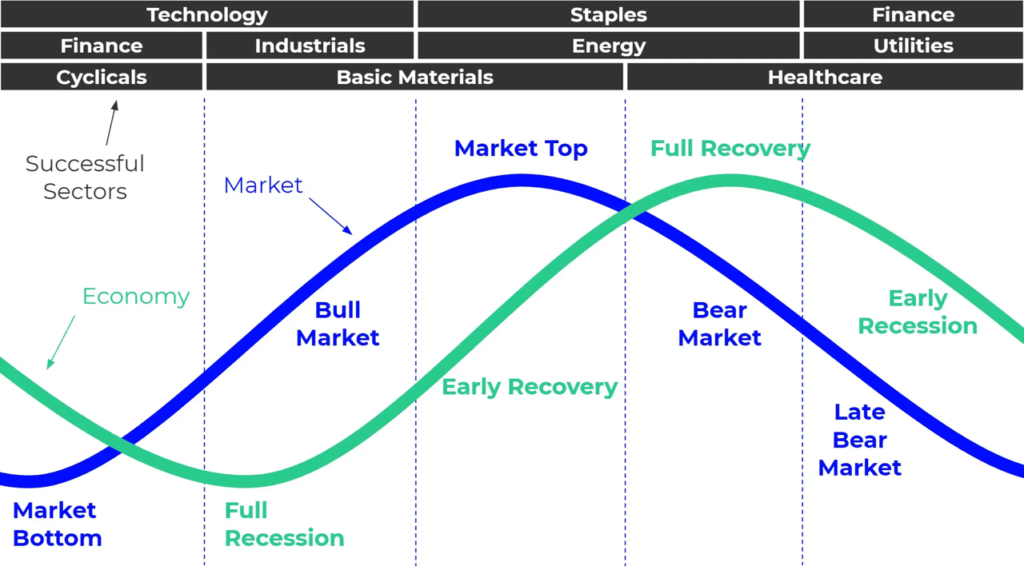Ökningen av plattformar för spel och underhållning på nätet har resulterat i en intressant situation för många aktörer i branschen. Att förstå djupet av denna marknadsanalys kan hjälpa intressenter att dra slutsatser om framtiden för dessa spelmöjligheter. Genom att studera spelvanor hos olika målgrupper kan vi se en tydlig förändring i människors preferenser och valmöjligheter.
I dagens snabba samhälle är det viktigare än någonsin att analysera förändringar i kundbeteenden samt hur dessa kan påverka marknadens struktur. Framtiden för erbjudanden på plattformar utan strikt nationell reglering lovar att bli fascinerande, och den snabbväxande konkurrensen tvingar företag att anpassa sina strategier för att locka och behålla spelare.
Genom att ta del av insikter om substantiella förändringar i spelvanor kan aktörer positionera sig bättre i en ständig kamp om uppmärksamhet och lojalitet. Genom att utforska dessa aspekter kan man förbereda sig för de utmaningar och möjligheter som ligger framför oss.
Ökning av spelare på olicensierade casinon under de senaste åren
Under de senaste åren har det skett en markant ökning av individer som väljer att spela på oreglerade plattformar. En kombination av faktorer har bidragit till denna trend, inklusive förändringar i spelvanor och en diversifierad demografi bland spelare.
Den moderna spelaren är inte längre homogen, utan präglas av olika bakgrunder och preferenser. Många nya entusiaster attraheras av flexibiliteten och de unika erbjudandena som oreglerade sajter vanligtvis erbjuder. Detta skapar en ny typ av spelupplevelse som tilltalar en bredare publik.
Framtiden för spelande på dessa plattformar tyder på en fortsatt tillväxt. Med ökad tillgång till teknik och Internet, samt en större acceptans av digitala underhållningsalternativ, kan man förvänta sig att trenden kommer att intensifieras. Spelvanorna förändras ständigt, och många söker sig efter nya sätt att engagera sig och utforska sin hobby.
Sammanfattningsvis kan den ökade aktiviteten på oreglerade spelsajter ses som en reflektion av en dynamisk marknad där spelare strävar efter att anpassa sina val efter sina egna intressen och behov.
Utveckling av sifferdata kring spelproblem relaterade till internationella spelplattformar

Under de senaste åren har fokus på spelproblem kopplade till internationella spelplattformar ökat markant. En grundlig marknadsanalys visar att spelvanor förändras bland användarna, och demografiska faktorer spelar en stor roll i detta. Många söker sig till utländska bettingsidor, vilket i sin tur påverkar mönstren av beroende och spelproblem.
Studier indikerar att yngre spelare, särskilt de i åldern 18–30, är mer benägna att utveckla problematiska spelvanor på dessa plattformar. Detta kan kopplas till en mer riskfylld inställning till spel och en strävan efter spänning. Samtidigt visar forskning att äldre spelare tenderar att ha en mer ansvarstagande inställning, vilket kan tyda på att spelvanor också är beroende av livserfarenhet och sociala faktorer.
En djupare insikt i demografi kring spelproblem visar att både män och kvinnor påverkas, men män rapporterar oftare mer allvarliga spelproblem. Det är också värt att notera att spelvanor har skiftat mot mer mobila plattformar, där människor spelar när som helst och var som helst, vilket ytterligare komplicerar situationen.
Sammanfattningsvis har utvecklingen av sifferdata kring spelproblem kopplade till internationella spelplattformar blivit en viktig fråga inom iGaming-industrin. Att förstå dessa mönster är avgörande för att kunna ta fram effektiva åtgärder för att stödja dem som drabbas. Genom att kombinera marknadsanalys med riktad information kan vi skapa en mer medveten spelmiljö för alla användare.
Populära spel och bonusar erbjudna av casinon utan svensk licens
I takt med att spelvanor förändras blir det allt viktigare att förstå vad som lockar spelare till plattformar utan nationell tillståndsgivning. Genom marknadsanalys kan vi se att det finns några specifika spel och bonusar som verkligen går hem hos användarna.
Populära spel varierar, men titlar som slots, bordsspel och live dealer-spel får mycket uppmärksamhet. Många av dessa sajter erbjuder innovativa spel från ledande utvecklare, vilket säkerställer en spännande upplevelse. Några av de mest eftertraktade spelen inkluderar:
- Progressiva jackpottar som kan generera enorma vinster.
- Klassiska slots med enkla regler som attraherar både nya och erfarna spelare.
- Live roulette och blackjack som ger en autentisk känsla av att vara i ett fysiskt kasino.
Bonusar är en annan stor faktor i valet av spelplattform. Många aktörer utan nationell licens erbjuder attraktiva incitament för att locka nya kunder samt för att behålla befintliga. Några vanliga typer av bonusar inkluderar:
- Välkomsterbjudanden med gratis snurr eller insättningsbonusar.
- Lojalitetsprogram som belönar spelare för regelbundet deltagande.
- Kampanjer och specialerbjudanden under särskilda tillfällen eller evenemang.
Framtiden ser ljus ut för dessa alternativ. Med spelarnas efterfrågan på mångfald och större valmöjligheter förväntas fler plattformar dyka upp med unika erbjudanden och innovativa spel. Marknadsanalys kommer vara avgörande för att förstå dessa förändringar och anpassa sig till nya spelvanor, vilket gynnar spelare och aktörer på sikt.
Reglering och framtida utsikter för marknaden av olicensierade casinon

Framtiden för marknaden av olicensierade spelhus är ett ämne som engagerar både spelare och branschexperter. Med den ökande digitaliseringen och efterfrågan på diverse spelalternativ är det viktigt att analysera de rådande lagarna och hur de kan påverka tillgången och säkerheten för spelare.
Med en noggrann marknadsanalys kan vi observera att majoriteten av spelarna som vänder sig till oreglerade alternativ ofta kommer från specifika demografiska grupper. Dessa individer söker ofta mer frihet och ett bredare utbud än vad som erbjuds av de licensierade aktörerna. Det är värt att notera att denna trend av olicensierat spelande kan leda till en ökad insyn och eventuell reglering i framtiden.
Experter på området tror att myndigheter kommer att skapa mer strikta regler för att hantera och kontrollera olicensierade aktörer. Detta kan i sin tur leda till en mer transparent och rättvis marknad, där spelare skyddas och ändå har tillgång till den mångfald av alternativ de önskar. Denna utveckling är avgörande för att alla parter ska kunna samexistera på ett säkert och ansvarsfullt sätt.
Sammanfattningsvis kan vi säga att framtiden för olicensierade spelhus är fylld av osäkerhet men också av möjligheter. En förändrad lagstiftning kan leda till en renare och mer säker marknad där demografi och preferenser hos spelare fortfarande beaktas och respekteras.
Frågor och svar:
Vad är skillnaden mellan online casinon utan svensk licens och de med svensk licens?
Online casinon utan svensk licens regleras inte av den svenska spelmyndigheten, vilket innebär att de följer andra lands lagar och regler. Detta kan påverka spelarnas skydd och ansvar. Casinon med svensk licens erbjuder en högre grad av reglering och skydd för spelare, inklusive ålderskontroll och verktyg för spelansvar.
Vilka är de vanligaste trenderna bland spelare på online casinon utan svensk licens?
En av de mest framträdande trenderna är att spelare söker efter stora bonusar och kampanjer som ofta är mer generösa än de som erbjuds av svenska casinon. Dessutom har det skett en ökning av intresset för kryptovalutor som betalningsmetod. Många spelare lockas också av en större variation av spelautomater och live dealer-spel som finns tillgängliga på dessa plattformar.
Finns det några risker med att spela på casinon utan svensk licens?
Ja, det finns vissa risker. Spelare har mindre skydd mot oetiska metoder och kan ha svårare att lösa tvister. Dessutom är insättningar och uttag kanske inte alltid lika säkra som på licensierade alternativ. Spelare bör vara medvetna om dessa faktorer och kanske göra noggranna efterforskningar innan de registrerar sig på ett casino utan svensk licens.
Hur påverkar bristen på svensk licens spelupplevelsen på online casinon?
Bristen på svensk licens påverkar spelupplevelsen genom att erbjuda en mer varierad spelportfölj och högre bonusar. Däremot kan det också innebära mindre spelarskydd och begränsade verktyg för ansvarigt spelande. Många spelare uppskattar flexibiliteten och de breda valmöjligheterna, men bör också vara medvetna om de potentiella farorna som följer med mindre reglerade plattformar.




